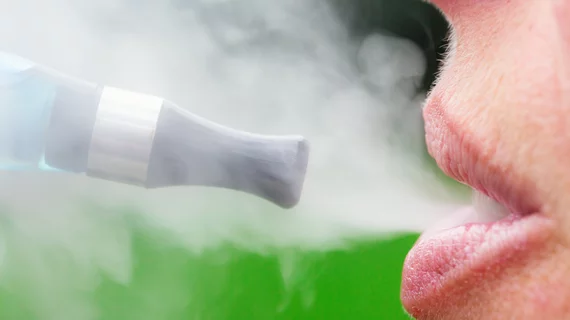Researchers urge radiologists to keep eyes peeled for vaping-related lung damage
As concerns about vaping-related lung injury continue to spread across the country, researchers are giving radiologists some tips to be ready for the next patient.
Investigators from several academic institutions summarized literature written on this topic to date, and shared their findings Wednesday, Oct. 9, in the American Journal of Roentgenology. Imaging professionals must be on the lookout for some of the telltale signs of such disease, wrote Travis Henry, with the University of California San Francisco’s Department of Radiology, and colleagues.
“E-cigarette use is associated with a range of lung injury patterns that have only recently been recognized as use of these products continues to rise,” the authors concluded. “When the radiologist sees one of these patterns of lung injury, it is important to raise the possibility of vaping-induced lung injury because cessation of vaping is an important step in treatment.”
Some of the signs to look out for include hypersensitivity pneumonitis, diffuse alveolar hemorrhage, and several different types of pneumonia, according to the study. Henry and co-authors warn that this list is far from encompassing, with some vaping products containing diacetyl, for instance, which can cause other lung injury patterns such as constrictive bronchiolitis.
“Because of the heterogeneity of both the construction of e-cigarettes and the substances aerosolized, there are likely many other pulmonary manifestations not covered in this article,” the study stated.

